Mapworks: Make Academic Achievement Possible for Students
What is Mapworks?
Map (Making Achievement Possible) works is an online tool for faculty, staff, and advisors to assist students in achieving their academic goals and persist toward graduation. Faculty may access Mapworks from the Faculty/Advisor tab in myHilltop.stedwards.edu. Faculty and students have already been receiving correspondence from Nicole Guerrero Trevino, the Associate Vice President for Student Academic Support Services, in how to participate and access Mapworks.
Faculty, including full time and adjunct faculty including faculty advisors, should use Mapworks throughout the semester to support and inform their students on the students’ academic success.
- Anytime – Submit a Referral – used by faculty or advisors to bring attention to a specific area of concern to other faculty/staff that are connected to that student.
- Week 4 of the Semester – Attendance Reports – used by faculty to report the attendance of their students.
- Mid Semester – Mid-Term Grade Reports – used by faculty to report the progress of the students in their courses.
- Mid Semester – Athlete Progress Reports – used by faculty to report the progress of the student athletes in their courses.
When should students use it?
Students should use Mapworks as needed to check their progress in their courses. Faculty, advisors and staff will correspond with students using Mapworks updating them on their academic progress and success.
Learn more about the use of Mapworks at St. Edward’s University:
Who should I contact for further questions?
Contact Nicole Guerrero Trevino, Associate Vice President for Student Academic Support Services, at 512-428-1037 or by email at nicoleg@stedwards.edu.
New Technology for Innovative Learning & Teaching Pilot Project Grants for 2015-2016
 The Teaching, Learning, and Technology Roundtable (TLTR) congratulates the winners of Technology for Innovative Learning & Teaching Pilot Project Grants for 2015-2016. These grants fund faculty who wish to pursue innovative and technologically-sophisticated teaching. All proposals are evaluated by the TLTR Grants Selection sub-committee, comprised of at least 3 faculty members, 2 instructional technology staff members, and the CTE director. Abstracts for the projects are available on the TLTR Pilot Projects webpage. This year’s projects will engage students in research by using mobile devices to gather data and by using qualitative data analysis, join the Maker movement through 3-D printing, use remote control robots in conjunction with iPads to document teaching practice, and help students gather and reflect on their own personal data.
The Teaching, Learning, and Technology Roundtable (TLTR) congratulates the winners of Technology for Innovative Learning & Teaching Pilot Project Grants for 2015-2016. These grants fund faculty who wish to pursue innovative and technologically-sophisticated teaching. All proposals are evaluated by the TLTR Grants Selection sub-committee, comprised of at least 3 faculty members, 2 instructional technology staff members, and the CTE director. Abstracts for the projects are available on the TLTR Pilot Projects webpage. This year’s projects will engage students in research by using mobile devices to gather data and by using qualitative data analysis, join the Maker movement through 3-D printing, use remote control robots in conjunction with iPads to document teaching practice, and help students gather and reflect on their own personal data.
This year’s winners are:
Raelynn Deaton Haynes, Assistant Professor, Biological Sciences (NSCI) for the project, “Grabbing Panama by the Isthmus: Using Technology to Enhance the Study Abroad Experience for Evolution Students”
Rachael Neal, Assistant Professor, Sociology, Social Work, and Criminology (BSS) for the project, “Inside and Outside: Exploring the Boundaries of Community”
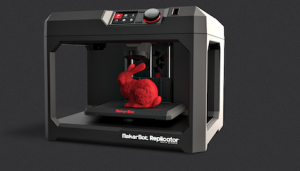 Sara Parent-Ramos, Visiting Professor of Art, Visual Studies (HUM) and Michael Massey, Assistant Professor of Humanities, for the project, “3D Printing Pilot Project: Interdisciplinary Applications and Pedagogical Explorations”
Sara Parent-Ramos, Visiting Professor of Art, Visual Studies (HUM) and Michael Massey, Assistant Professor of Humanities, for the project, “3D Printing Pilot Project: Interdisciplinary Applications and Pedagogical Explorations”
Kris Sloan, Associate Professor of Education and Chair, Teacher Education (EDUC) for the project, “Capturing Complexities in Classroom Teaching”
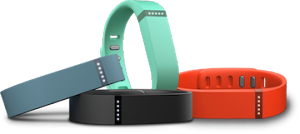 Michael Wasserman, Assistant Professor, Environmental Science & Policy (BSS) for the project, “Incorporating Personal Health Devices Into Environmental Science and Global Studies Courses in Angers, France: Understanding the Influence of Culture and Environment on Human Health”
Michael Wasserman, Assistant Professor, Environmental Science & Policy (BSS) for the project, “Incorporating Personal Health Devices Into Environmental Science and Global Studies Courses in Angers, France: Understanding the Influence of Culture and Environment on Human Health”
Higher Ed Highlights from SXSWEdu
In March, Austin hosted the fifth annual SXSWEdu, the education-focused sibling to SXSW’s larger Interactive, Music and Film festivals. SXSWEdu brings together researchers and practitioners to discuss innovative solutions to pressing issues facing higher education as well as K-12.
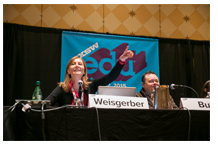 St. Edward’s was well represented with faculty presenting in two sessions. Professors Corinne Weisgerber and Shannan Butler provoked one of the more spirited debates at the conference in their session “Disrupting the Disruption in Higher Education”. Continue reading
St. Edward’s was well represented with faculty presenting in two sessions. Professors Corinne Weisgerber and Shannan Butler provoked one of the more spirited debates at the conference in their session “Disrupting the Disruption in Higher Education”. Continue reading
Tour Your Colleagues’ Courses in Canvas: Business Ethics, Counseling, CULF, Graphic Design, Presentational Speaking, & Psychology
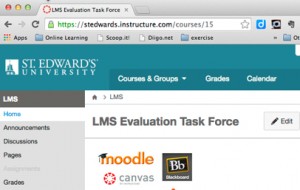 Eighteen of your colleagues are trying out the Canvas Learning Management System this semester as a potential alternative to Blackboard. The full list of Canvas pilots is available on this webpage: Canvas Pilots. Hear from six of them on Tuesday, March 24 at 10 am in Library 141. These faculty will briefly present their courses followed by a panel discussion and audience Q&A:
Eighteen of your colleagues are trying out the Canvas Learning Management System this semester as a potential alternative to Blackboard. The full list of Canvas pilots is available on this webpage: Canvas Pilots. Hear from six of them on Tuesday, March 24 at 10 am in Library 141. These faculty will briefly present their courses followed by a panel discussion and audience Q&A:The Task Force for Learning Management System Evaluation will base their recommendation, in part, on the experiences of instructors in these pilots. Come find out how students like Canvas, how it compares to Blackboard, how the transition between systems works, and what it’s really like to teach with Canvas.
Tour Your Colleagues’ Courses in Canvas: Education, Chemistry, Cultural Foundations, Digital Media Management, and Math
 Eighteen of your colleagues are trying out the Canvas Learning Management System this semester as a potential alternative to Blackboard. The full list of Canvas pilots is available on this webpage: Canvas Pilots. Hear from five of them on Tuesday, March 3rd at 3:30 pm in Library 141. These faculty will briefly present their courses followed by a panel discussion and audience Q&A:
Eighteen of your colleagues are trying out the Canvas Learning Management System this semester as a potential alternative to Blackboard. The full list of Canvas pilots is available on this webpage: Canvas Pilots. Hear from five of them on Tuesday, March 3rd at 3:30 pm in Library 141. These faculty will briefly present their courses followed by a panel discussion and audience Q&A:- Chris Flynn, CULF 1318.15: Madness and Civilization
- Carol Gee, MATH 4343: Topology
- Liz Johnson, EDUC 2332: Educational Technology Integration
- Jason Rosenblum, DMBA 6220.01: Independent Research
- Tricia Shepherd, Chem 2320: Analytical Chemistry
Tour St. Edward’s Courses in Canvas with Faculty
 Interested in how your colleagues are using Canvas? Would you like to ask questions about the faculty experience using Canvas? Do you want to see a real course in Canvas?
Interested in how your colleagues are using Canvas? Would you like to ask questions about the faculty experience using Canvas? Do you want to see a real course in Canvas?
As part of the Learning Management System (LMS) Task Force two panel discussions of Canvas will be held to allow the community to take a closer look at how Canvas is being used on campus. On March 3rd at 3:30 and on March 24th at 10:00 am a panel of St. Edward’s faculty who are piloting Canvas this semester will demonstrate their Canvas classes and discuss their experience with Canvas. Both sessions will be held in Library 141.
We currently are piloting Canvas with 18 courses. The full list of Canvas pilots is available on this webpage: Canvas Pilots. Faculty who are teaching these courses will
- Show selected areas of their Canvas course
- Share their experience developing their course
- Contrast use of Canvas to Blackboard
- Share student reaction to Canvas
Join us for an opportunity to see Canvas and provide feedback to the LMS Task Force.
What’s Next for Blackboard?
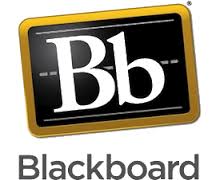 If you missed the on campus demonstration last month of Blackboard’s planned cloud-based system, you have another opportunity to check out Blackboard’s plans for the future. Blackboard will present a webinar “Learning in the Cloud – Why Cloud? Why Now?” on Thursday, February 26 at noon.
If you missed the on campus demonstration last month of Blackboard’s planned cloud-based system, you have another opportunity to check out Blackboard’s plans for the future. Blackboard will present a webinar “Learning in the Cloud – Why Cloud? Why Now?” on Thursday, February 26 at noon.
Register online at http://bbbb.blackboard.com/LearningInTheCloud.
This webinar will be presented by Greg Ritter, Director of Higher Education Solutions Management at Blackboard. The webinar will focus on
- The latest industry thinking on Cloud computing
- Why IT and Academic Technology leaders are increasingly embracing the cloud
- How your institution can move to and benefit from a Cloud deployment of Blackboard Learn
Using Box for Collaborative Cloud Storage in Your Courses
Box is a cloud storage and collaboration solution available to St. Edward’s University students, faculty, and staff. With Box, you can create, store, collaborate, and access files and information securely from anywhere, on a multitude of devices. Faculty, you have 50 GB of storage space on Box. Use it today to save files for your courses and share folders and files with your students or colleagues to collaborate.
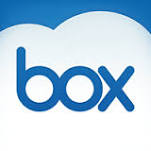 How do I Access Box?
How do I Access Box?
To access your new Box account, visit https://stedwards.app.box.com and click continue. You will be routed to the myHilltop login screen, and after successfully entering your St. Edward’s username and password, you will be routed to your Box dashboard.
Once logged in, you can check out the “Welcome to Box” resources folder provided for you. Please review the Box SEU FAQ document. There is also helpful documentation and videos, to help you get the most out of the great Box benefits now available to you, including:
- 50GB of storage
- Ability to upload large files of up to 5GB in size (Great for large projects, images, videos, etc.)
- Password protected sharing
- The ability to lock and edit shared files directly from the web (Box Edit)
- Real-time collaboration on documents (Box Notes)
- The option to upload files via email
- You can securely share files with your students or with your colleagues as collaborators.
- Replacing email attachments with shared links
- Saving frequently accessed websites as bookmarks
- And more!
How are Faculty using Box Today?
Faculty, staff, and students are currently using Box for their work and courses. Here are a few faculty stories of how Box is used for their courses:
Kim Garza, Assistant Professor of Graphic Design, uses Box in her course and shared her story:
“I wanted to share what happened in my class yesterday with Box. At the beginning of the semester, I created a class folder by posting the collaboration link in Bb/Canvas (super easy). We’ve been adding files to it along the way. But yesterday, I asked them to edit a Box note in class. They were so jazzed by the colored boxes with their initials moving all over the place. It was a bit performative in nature. I enjoyed watching them delight in collaborating in the cloud synchronously. Now, I will say that their task wasn’t really profound — an over-glorified sign-up sheet — but the engagement and geek-out factor was off the charts.”
Other faculty, including the Capstone Faculty, such as Todd Onderdonk, Associate Professor Of University Studies, are encouraging their students to use Box as a great option for the students to store the electronic parts of their research files in Box folders, and to help them with their research processes.
Jump In or Get Help
Box is fully available to all faculty, staff, and students of St. Edward’s University. Feel free to start using it whenever you are ready. If you would like support, however, in using box, the Office of Information Technology can help.
- If you would like to consult with Instructional Technology staff on ways you could use Box in your courses contact instcom@stedwards.edu.
- If you would like your students to be trained on the uses of Box contact training@stedwards.edu.
- Please contact the O.I.T. Computer Help at 512.448.8443 or support@stedwards.edu if you have any other questions or issues.
What is Canvas, Who Is Piloting It, and When Can You See It?
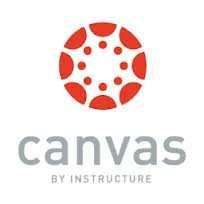 See the possibilities of Canvas in one of two available demos for faculty, students, and staff on Wednesday, February 4 in Library 141 at either 9:30-11:00 am or 1:00-2:30 pm. Even if you can’t make a whole session, stop by to get a taste and ask questions of an instructor experienced with Canvas.
See the possibilities of Canvas in one of two available demos for faculty, students, and staff on Wednesday, February 4 in Library 141 at either 9:30-11:00 am or 1:00-2:30 pm. Even if you can’t make a whole session, stop by to get a taste and ask questions of an instructor experienced with Canvas.
What is Canvas?
Canvas is a learning management system (LMS) created by Instructure. Launched in 2011, Canvas offers a cloud-native, flexible interface, designed for the social network era. In other words, Canvas applies contemporary, user-centered design principles for learner-centered teaching. Recognizing that learning happens throughout the digital ecosystem, rather than a walled-garden approach, where everything must happen in the LMS, Canvas takes an ecosystem approach by intentionally linking out to a variety of third party providers.
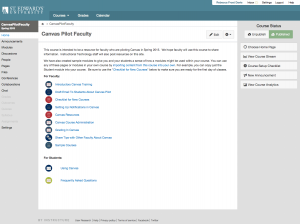 For example, students can choose how and when to receive communications—by personal or university email addresses, by text message, even by Facebook. Canvas also has a much more flexible interface that allows instructors to implement powerful student-centered learning design, drawing on such standards as the Quality Matters rubric, which focuses on research-based, tested design principles for digital course elements. For example, in addition to linking activities to clearly stated course learning outcomes, faculty can link to rubrics while grading, but also give just-in-time video feedback. In fact, students can easily communicate by video, as well, which reenforces the high-touch experience of SEU even outside of the physical classroom.
For example, students can choose how and when to receive communications—by personal or university email addresses, by text message, even by Facebook. Canvas also has a much more flexible interface that allows instructors to implement powerful student-centered learning design, drawing on such standards as the Quality Matters rubric, which focuses on research-based, tested design principles for digital course elements. For example, in addition to linking activities to clearly stated course learning outcomes, faculty can link to rubrics while grading, but also give just-in-time video feedback. In fact, students can easily communicate by video, as well, which reenforces the high-touch experience of SEU even outside of the physical classroom.
Why are we talking about Canvas?
As part of the SEU Learning Management System (LMS) Evaluation, the task force for LMS Evaluation is considering whether Canvas might be a better tool for preparing our students to meet the challenges and opportunities of the 21st century. To help us explore that question, the LMS task force invited faculty to pilot courses in Canvas this semester. Eighteen faculty from twelve departments in all six schools took us up on the offer. The full list of pilot faculty is available on this webpage: Canvas Pilots. We will gather data from these faculty through three task-force-designed surveys (a pre-semester baseline survey on LMS use, a mid-semester survey on Canvas use, and an end of semester survey on Canvas use). We will also survey students and invite both students and faculty to participate in focus groups.
We hope to learn if Canvas is a better tool from the student and faculty perspectives, but also what it would take for faculty to migrate as easily as possible from Blackboard to Canvas. Is a change feasible? What kind of training and support do instructors need? How can we make any potential transition as seamless as possible. We already know that if the LMS task force should recommend a switch, that we would want to run the two LMS systems in tandem for the 2015-2016 academic year. Later this semester we’ll invite some of these pilot faculty to share their experiences with campus.
What is an LMS?
The learning management system or LMS is an integral part of our learning ecosystem that aggregates, connects, and manages many aspects of the course-based learning experience. Any LMS must support a variety of activities for faculty and students including, posting course materials, documents, and other content; course administration and communication; recording and sharing grades; assessing students and their work and offering feedback; submission of assignments; providing opportunities for interaction for all course participants, e.g., through online discussion, collaboration tools like wikis, and sharing of student work. Our current Learning Management System is Blackboard Learn, which was last reviewed in 2010. Since that time there have been many changes in the LMS market. Our current version of Blackboard is outdated and needs to be either updated to a newer version or replaced by a different learning management system.
